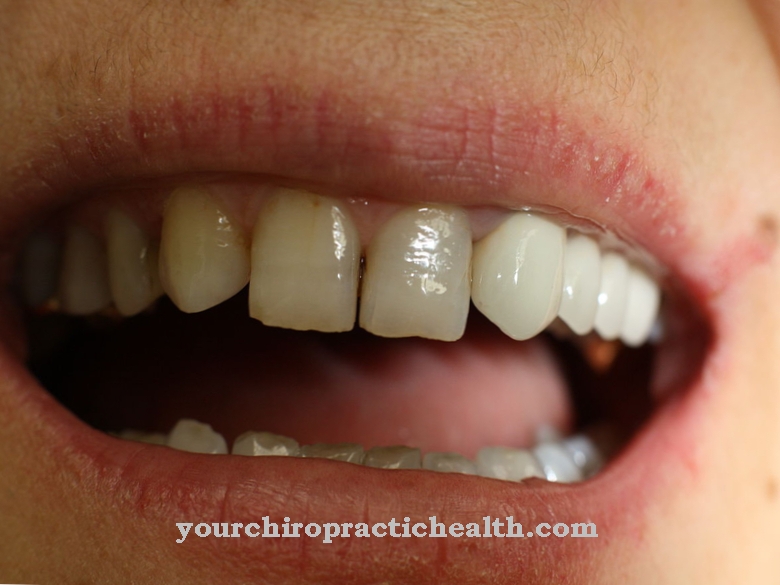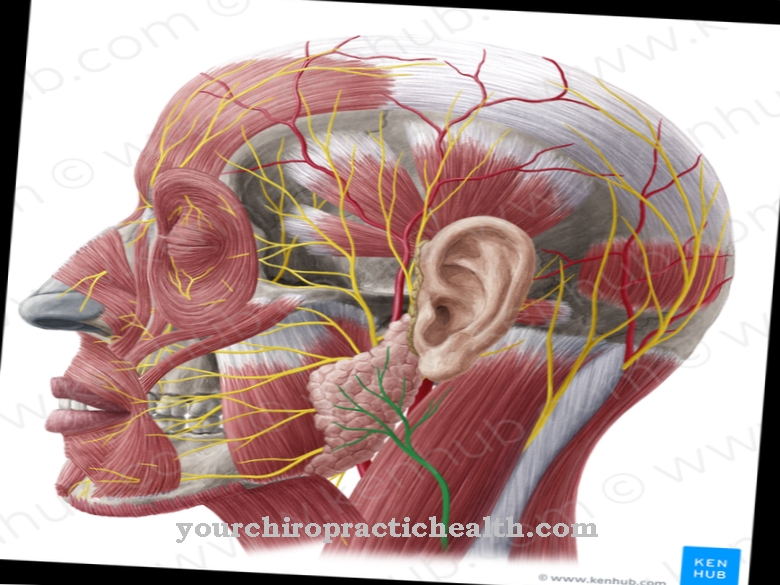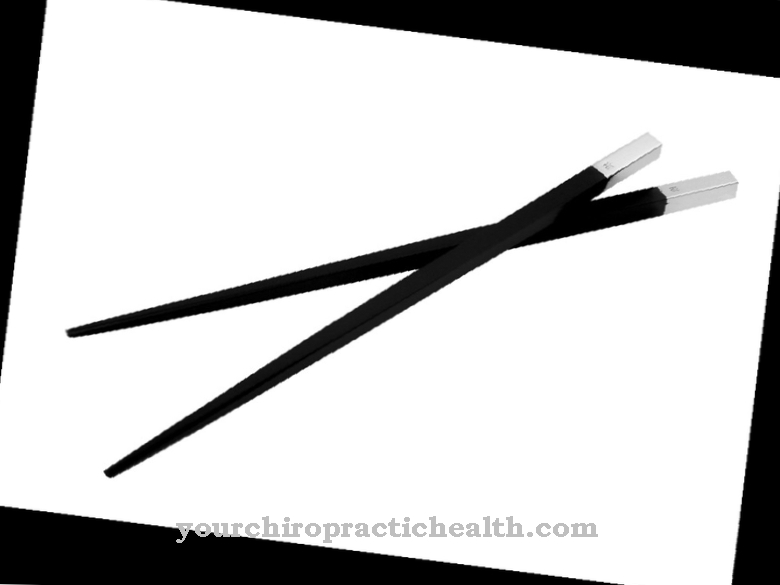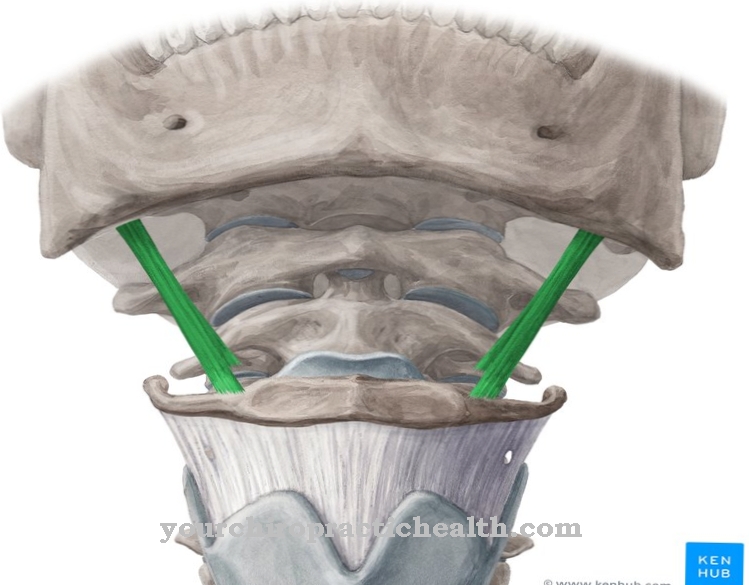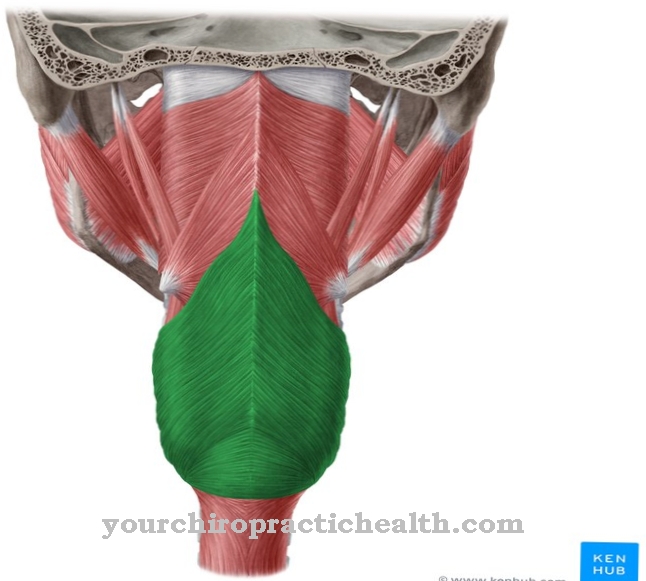The Meissner corpuscles are RA mechanoreceptors that sense changes in pressure and belong to the differential receptors. Meissner corpuscles only report pressure changes and adapt to constant pressure stimuli. Incorrect perceptions of the receptors are often caused by the central nervous system.
What is the Meissner corpuscle?
Receptors are the first place in human perception. These sensory cells detect certain stimuli and also convert the excitation into a language that the central nervous system can understand and process.
For the active haptic and passive tactile sense of touch, in addition to the thermoreceptors for temperature and the noci receptors for pain, the mechanoreceptors for mechanically acting forces such as pressure, vibration and touch play a role. The human mechanoreceptors correspond to either PC, SA, or RA receptors. The Meissner tactile corpuscles, or Meissner corpuscles for short, are rapidly adapting RA receptors in the inguinal skin. The sensors were named after their discoverer Georg Meissner.
The Meissner corpuscles are pressure receptors that fall into the class of so-called differential receptors and thus measure changes in stimuli. Meissner bodies are able to adapt to a constant pressure stimulus and, instead of information about constant pressure, only pass on information about pressure changes to the central nervous system. The sensors also belong to the group of lamellar bodies.
Anatomy & structure
Meissner bodies are mainly located in the fingertips and lips. There are no Meissner bodies in hairy skin areas and thus in the field skin. The receptors are located in the stratum papillare of the dermis within all areas of the inguinal skin.
The sensors are between 100 and 150 µm long and have the shape of a pin. Outwardly, the receptor organs are surrounded by a capsule of connective tissue, known as the perineural sheath, which fixes the corpuscles in the surrounding tissue. In this connective tissue capsule are nerve fibers that are largely surrounded by insulating myelin. The myelin improves the conductivity of the nerve tissue and protects the nerves from loss of potential. The Meissner corpuscles are encased in five to ten myelin sheaths in the form of Schwann cells, which are stacked on top of each other.
The endings of the nerve fibers are not myelinated within the perineural sheath and are therefore open to pressure stimuli from the environment. When exposed to pressure, the open nerve endings generate action potentials. Each Meissner corpuscle is around 40 to 70 μm wide and is connected to up to seven dendritic axons, which wind helically around the cell.
Function & tasks
Meissner bodies are rapidly adapting RA and differential receptors. The action potential frequency generated by the sensors is in proportion to the speed of a pressure stimulus change. The receptive field of a Meissner body is very limited in area and has a high resolution, which leads to a better differentiation of pressure stimuli that are close to one another. Meissner corpuscles only generate an action potential when the stimulus strength changes. For example, they react when the skin is dented. However, as soon as they have adapted to the new low position of the skin, they no longer emit signals.
Their adaptation to a constant pressure stimulus takes place at a speed of 50 to 500 ms. Meissner corpuscles not only play a key role for the human sense of touch due to their ability to adapt to pressure and are, for example, the reason why people no longer perceive clothing on the skin as a conspicuous touch stimulus after a short time. Together with the mechanoreceptive Merkel cells for measuring pressure intensity, the Ruffini corpuscles for stretching stimuli and the Vater-Pacini lamellar corpuscles for vibration, the Meissner corpuscles form a system of specially specialized sensory cells that register and systematize all contact stimuli on the skin able.
Action potentials of a certain resting frequency are generated on the nerve fibers of the Meissner corpuscles when the pressure changes. At first the frequency of the potential rises steeply, but immediately after the rise it falls back to the resting value, although the triggering stimulus is still acting. When the stimulus ceases, the frequency of the Meissner corpuscles falls below the resting value and then returns to it. The response behavior of the Meissner corpuscles is called the dynamic or phasic response. Besides the Meissner corpuscles, the hair follicles are also differential receptors.
You can find your medication here
➔ Medicines for painDiseases
In most cases, malfunctions in the Meissner bodies are not due to damage to the sensory cells themselves. Most apparently receptor-associated diseases are due to damage to the nerve pathways that transmit stimuli.
Such damage can, for example, be the result of inflammation of the central nervous tissue, as is the case with diseases such as the autoimmune disease multiple sclerosis. In addition, strokes, spinal cord infarctions, polyneuropathies of the peripheral nervous system or tumors of the central nervous system can cause false perceptions of the Meissner bodies. Actual receptor diseases must be distinguished from nerve-associated diseases, which are often preceded by system-impairing poisoning. In other cases, actual receptor disease is caused by a receptor mutation. If such a mutation is present, then, unlike with nerve-associated diseases, the symptoms appear immediately after birth.
The nerve-associated diseases with an apparent receptor connection also usually cause general sensitivity disorders and are not only expressed clinically as a misperception of the Meissner bodies. In receptor-associated diseases caused by mutations, defective receptors arise due to the mutation. The sensory cells are therefore no longer able to bind ligands, transmit signals or transduce signals, for example. Other mutations do not incorporate Meissner corpuscles in sufficient quantities or do not produce them in sufficient quantities from the outset. Receptor-associated diseases are also the so-called ion channel diseases, which allow the Meissner body to generate insufficient action potentials.

